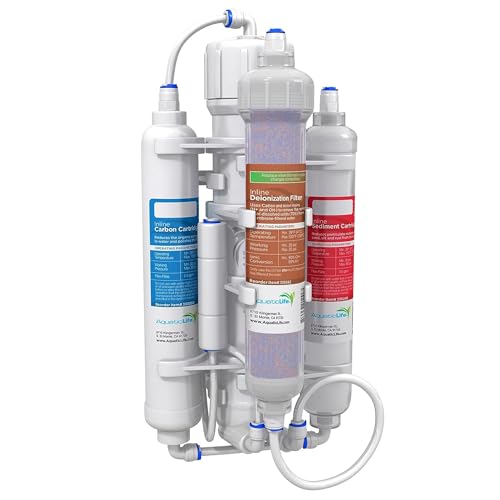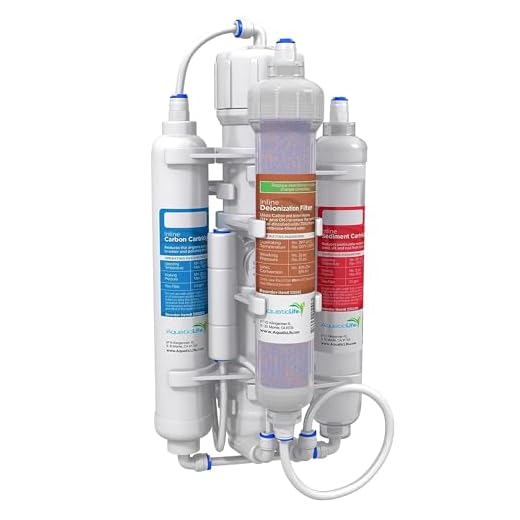Reef
Blog
What causes cyanobacteria in reef tank

Cyanobacteria, also known as blue-green algae, can be a common problem in reef tanks. These microorganisms are not actually algae, but a type of bacteria that can cause a range of issues in the tank ecosystem.
Cyanobacteria outbreaks are typically caused by an imbalance in the tank’s water chemistry, lighting, or nutrient levels. Excessive phosphates and nitrates in the water can fuel the growth of cyanobacteria, as they thrive in nutrient-rich environments. Poor water circulation and inadequate filtration can also contribute to the growth of these bacteria.
The presence of cyanobacteria can be visually identified by the slimy layer that forms on the tank walls, substrate, and rocks. It can range in color from green to blue-green and even black. Cyanobacteria outbreaks can also lead to a foul smell and can harm coral and other inhabitants in the tank.
Preventing and treating cyanobacteria outbreaks involves several steps, including regular water testing, maintaining proper lighting levels, and ensuring a balanced nutrient system. It may also be necessary to increase water circulation and improve filtration to prevent the buildup of excess nutrients. In some cases, antibiotic treatments or the introduction of certain marine snails, such as trochus snails, can help control the cyanobacteria population.
By taking proactive measures and addressing the underlying causes of cyanobacteria growth, reef tank enthusiasts can create a healthier and more visually appealing environment for their marine life.
The Hidden Dangers of Cyanobacteria in Reef Tanks
Cyanobacteria, also known as blue-green algae, can pose a significant threat to the health and overall well-being of reef tanks. These microscopic organisms can quickly multiply and form unsightly, slimy mats on rocks, corals, and other surfaces within the tank. While cyanobacteria may initially seem harmless, they can have detrimental effects on the delicate balance of the reef ecosystem.
1. Oxygen Depletion
One of the primary dangers of cyanobacteria is their ability to deplete oxygen levels within the tank. As the cyanobacteria multiply, they create a dense mat that can hinder the exchange of gases, reducing the available oxygen for the other organisms in the tank. This can lead to stress and suffocation of the resident fish, corals, and other invertebrates.
2. Toxin Release
Another hidden danger of cyanobacteria is their ability to release toxins into the water. These toxins can negatively affect the health of the tank inhabitants, leading to a variety of issues such as tissue necrosis, weakened immune systems, and even death. Additionally, some cyanobacteria can produce harmful alkaloids that are toxic to fish and invertebrates.
It is important to note that cyanobacteria thrive in conditions that are conducive to their growth. Factors such as high nutrient levels, low water flow, excessive lighting, and poor water quality can create the perfect environment for these organisms to flourish. Regular maintenance and monitoring of water parameters can help prevent the establishment and growth of cyanobacteria in reef tanks.
In conclusion, cyanobacteria in reef tanks can have severe consequences for the health and survival of the tank inhabitants. Their ability to deplete oxygen levels and release toxins can lead to stress, suffocation, tissue necrosis, weakened immune systems, and even death. It is crucial for aquarium owners to actively prevent and control the growth of cyanobacteria in order to maintain a thriving and healthy reef ecosystem.
Understanding Cyanobacteria in Reef Tanks
Cyanobacteria, also known as blue-green algae, are a common problem in reef tanks. They can quickly take over the aquarium, covering rocks, substrate, and even corals with a slimy, algae-like layer. This can be unsightly and detrimental to the health of the tank’s inhabitants.
Causes of Cyanobacteria Blooms
Cyanobacteria blooms in reef tanks can be caused by a combination of factors, including:
- High nutrient levels: Excessive nutrients such as nitrates and phosphates can fuel the growth of cyanobacteria. These nutrients can come from overfeeding, decaying organic matter, or poor water quality.
- Poor water flow: Insufficient water flow and stagnant areas in the tank can create favorable conditions for cyanobacteria to thrive.
- Low oxygen levels: Inadequate oxygenation in the tank can promote the growth of cyanobacteria.
- High light levels: Excessive light, especially in the blue and red spectrum, can stimulate cyanobacteria growth.
Prevention and Treatment
To prevent and treat cyanobacteria outbreaks in reef tanks, it is important to address the root causes:
- Monitor nutrient levels: Regularly test the water for nitrates and phosphates and take appropriate measures to reduce them if necessary.
- Ensure proper filtration: Use a protein skimmer and high-quality mechanical and chemical filtration to remove excess nutrients and maintain water clarity.
- Optimize water flow: Install powerheads or wavemakers to create strong water movement throughout the tank, eliminating stagnant areas.
- Maintain adequate oxygenation: Increase surface agitation and consider using an air pump or diffuser to improve oxygen levels in the tank.
- Adjust lighting: Properly regulate light intensity and duration, avoiding excessive blue and red light.
- Regular maintenance: Perform regular water changes, siphon out detritus, and clean filters to keep the tank clean and nutrient levels in check.
If cyanobacteria have already taken hold in the tank, additional measures may be required, such as manually removing the algae, using chemical treatments, or introducing natural predators like certain snails or hermit crabs.
By understanding the causes and taking appropriate preventive measures, reef tank enthusiasts can effectively manage and minimize cyanobacteria blooms, ensuring a healthier and more vibrant aquatic environment for their corals and fish.
The Harmful Effects of Cyanobacteria
Cyanobacteria, also known as blue-green algae, can have detrimental effects on reef tanks when they become overgrown. Here are some of the harmful effects of cyanobacteria in a reef tank:
1. Oxygen Deprivation
When cyanobacteria overgrow, they can cover the surface of the water and block sunlight from reaching the photosynthetic organisms in the tank. This reduces the oxygen production in the tank, leading to oxygen deprivation for the other organisms, including corals and fish. Oxygen deprivation can cause stress, suffocation, and even death in reef tank inhabitants.
2. Nutrient Imbalance
Cyanobacteria thrive in nutrient-rich environments, and their rapid growth can indicate an imbalance in the tank’s nutrient levels. While a certain amount of nutrients is necessary for a healthy reef tank, excessive levels can fuel the growth of cyanobacteria. The presence of cyanobacteria can disrupt the delicate nutrient balance in the tank, leading to further complications and the suppression of other beneficial organisms.
3. Toxin Production
Some species of cyanobacteria produce toxins that can harm marine life. These toxins can cause tissue damage, inflammation, and even death in corals and fish. Additionally, the toxins can be released into the water, affecting the overall water quality and further impacting the tank inhabitants. It is important to identify and remove cyanobacteria promptly to minimize the risk of toxin exposure.
In conclusion, cyanobacteria in a reef tank can have harmful effects on the overall health and balance of the ecosystem. It is essential for aquarists to monitor and manage cyanobacteria populations to maintain a thriving and sustainable reef tank environment.
Identifying the Causes of Cyanobacteria
Cyanobacteria, commonly referred to as blue-green algae, can be a persistent and unsightly problem in reef tanks. Understanding the causes of cyanobacteria growth is crucial to effectively combat the issue and maintain a healthy tank environment for your reef organisms.
1. Poor Water Quality: One of the primary causes of cyanobacteria in reef tanks is poor water quality. Excessive nutrients, such as high levels of nitrates and phosphates, can fuel the growth of cyanobacteria. Regular water testing and proper maintenance of filtration systems can help identify and address any imbalances in water quality.
2. Inadequate Flow and Oxygenation: Insufficient water flow and oxygenation in the tank can contribute to the proliferation of cyanobacteria. Low flow areas provide stagnant conditions, which cyanobacteria thrive in. Ensuring proper circulation and oxygenation throughout the tank can help prevent cyanobacteria growth.
3. Overfeeding: Overfeeding your reef organisms can lead to an excess of organic matter in the water, creating an ideal environment for cyanobacteria to flourish. It is important to feed your inhabitants in moderation and remove any uneaten food promptly.
4. Light Levels: Cyanobacteria are photosynthetic organisms that require light for their growth. Excessive light intensity or prolonged exposure to light can stimulate cyanobacteria growth. It is essential to provide suitable lighting conditions for your reef tank inhabitants while avoiding excessive light exposure.
5. Poor Tank Maintenance: Neglecting regular tank maintenance, including regular water changes, cleaning of equipment, and removal of detritus, can contribute to cyanobacteria growth. Regular maintenance helps remove excess nutrients and organic matter that cyanobacteria thrive on.
By understanding and addressing these potential causes of cyanobacteria, reef tank owners can effectively prevent and control outbreaks. Maintaining balanced water conditions, optimizing flow and oxygenation, practicing proper feeding habits, ensuring suitable lighting, and regular tank maintenance are key steps towards maintaining a healthy and thriving reef tank environment.
Questions and answers
What are cyanobacteria?
Cyanobacteria are a type of bacteria that can photosynthesize and produce oxygen. They are often referred to as blue-green algae and can be found in various aquatic environments, including reef tanks.
Why do reef tanks get cyanobacteria?
Reef tanks can get cyanobacteria due to a variety of factors, including excess nutrients in the water (such as nitrates and phosphates), poor water circulation, high organic load, or imbalances in the tank’s lighting and nutrient levels. These conditions create an ideal environment for the growth of cyanobacteria.
How can cyanobacteria be harmful to reef tanks?
Cyanobacteria can be harmful to reef tanks because they can outcompete corals and other beneficial organisms for space and resources. They can also release toxins that can harm or kill other tank inhabitants. Additionally, cyanobacteria can create oxygen-depleted zones in the tank, leading to poor water quality and potentially harming the overall ecosystem.
How can cyanobacteria be prevented in reef tanks?
To prevent the growth of cyanobacteria in reef tanks, it is important to maintain proper water quality. This includes regular testing and monitoring of nutrient levels, establishing a balanced and appropriate lighting schedule, implementing good water circulation and filtration, and removing any excess detritus or organic waste from the tank. Additionally, avoiding overfeeding and properly quarantining and acclimating new tank inhabitants can help prevent the introduction of cyanobacteria into the tank.
How can cyanobacteria be treated in reef tanks?
When faced with cyanobacteria in a reef tank, it is important to address the underlying causes first. This may involve adjusting nutrient levels, improving water circulation, or modifying the tank’s lighting schedule. Additionally, manual removal of visible cyanobacteria and regular water changes can help reduce their population. In severe cases, the use of chemical treatments targeting cyanobacteria may be necessary, but it should be done with caution and following the instructions provided by the manufacturer.
What is cyanobacteria and why is it a problem in reef tanks?
Cyanobacteria are a type of bacteria that can grow in freshwater and marine environments. They are photosynthetic organisms that can produce oxygen and can also fix nitrogen. In reef tanks, cyanobacteria can cause issues because they can quickly cover surfaces with their slimy and unsightly growth, smothering corals and other delicate organisms. They can also release toxins that can harm other tank inhabitants.






